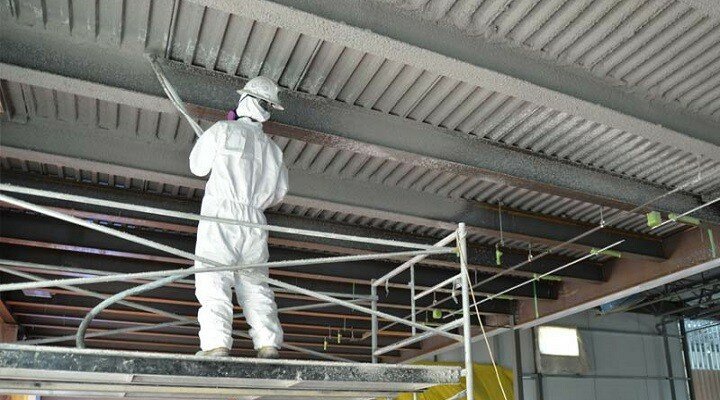Starting and running a charter business—whether it’s for boats, buses, or planes—can be a profitable venture. But one critical factor you need to keep track of is occupancy. Knowing how to calculate occupancy is essential to ensuring your business stays efficient, maximizes revenue, and avoids unnecessary losses.
In this blog post, we’ll walk you through how to calculate occupancy of a charter business. We’ll break it down step-by-step, provide simple examples, and explain why it matters to your business’s success.
Introduction
Running a charter business is all about managing your resources and making sure your services are fully utilized. Whether you’re offering transportation by air, land, or sea, understanding occupancy is key to optimizing your business operations.
In this post, we’ll explain:
- What occupancy means for a charter business
- Why calculating occupancy is so important
- How to calculate occupancy for your business with easy examples
- Some tips to improve occupancy rates and profitability
By the end of this article, you’ll have the knowledge to ensure your charter business runs at peak performance.
What Is Occupancy in a Charter Business?
Occupancy, in simple terms, refers to how many seats, spaces, or slots are filled compared to the total available in your charter service. For example, if you run a bus charter company and your buses each have 40 seats, your occupancy is the percentage of those seats that are filled on each trip.
Why does occupancy matter?
- It directly impacts your revenue. The higher the occupancy, the more you’re earning.
- Low occupancy means wasted resources, like fuel, staff time, and maintenance costs.
- Monitoring occupancy helps you adjust pricing, scheduling, and marketing to optimize your business.
How to Calculate Occupancy of a Charter Business
Now, let’s get to the main point—how to calculate occupancy of a charter business.
Step 1: Identify Total Capacity
The first thing you need to know is the total capacity of your charter. This is simply the number of available seats, spaces, or slots. For example:
- A bus might have 40 seats.
- A boat might have space for 100 passengers.
- A charter plane might have 180 seats.
Let’s say you own a bus with 40 seats.
Step 2: Track Actual Bookings
Next, you need to track how many of those seats are filled on a particular trip. Let’s say, on a particular trip, 32 out of 40 seats are booked.
Step 3: Calculate the Occupancy Percentage
The final step is to calculate the percentage of occupied seats. Use this simple formula:
java
Copy code
Occupancy Rate = (Booked Seats ÷ Total Capacity) × 100
Using our example:
java
Copy code
Occupancy Rate = (32 ÷ 40) × 100 = 80%
This means that 80% of your bus’s capacity is filled.
Examples of Occupancy Calculations
Here are a few more examples for different types of charter businesses:
Example 1: Boat Charter
- Total capacity: 100 passengers
- Booked passengers: 75
- Occupancy: (75 ÷ 100) × 100 = 75%
Example 2: Private Jet Charter
- Total capacity: 12 seats
- Booked seats: 10
- Occupancy: (10 ÷ 12) × 100 = 83.33%
Examples 3: Bus Charter
- Total capacity: 50 seats
- Booked seats: 40
- Occupancy: (40 ÷ 50) × 100 = 80%
Why Occupancy Rates Matter
Occupancy rates are a crucial metric for your business. Here are a few reasons why tracking it matters:
- Maximizing Revenue: Higher occupancy means you’re earning more. If your charter is consistently underbooked, you’re leaving money on the table.
- Resource Efficiency: Running a bus or boat with low occupancy wastes fuel, staff time, and maintenance costs.
- Pricing Adjustments: If you notice low occupancy during certain times, you can adjust prices to encourage more bookings during off-peak hours.
- Better Scheduling: Understanding occupancy trends can help you schedule trips when demand is high, minimizing empty trips.
Tips to Improve Occupancy Rates
Improving occupancy should always be a priority for a charter business. Here are some strategies:
- Offer Discounts for Off-Peak Times: If you notice low occupancy during specific days or times, offering a discount can help fill those spots.
- Partner with Other Businesses: Team up with hotels, tour operators, or event planners to sell group bookings and package deals.
- Implement Dynamic Pricing: Raise prices during peak times when demand is high, but lower them during off-peak times to encourage more bookings.
- Improve Your Marketing: Make sure you’re reaching your target audience through effective online and offline marketing. Utilize social media, email marketing, and even local ads to increase visibility.
Conclusion
Understanding how to calculate occupancy of a charter business is crucial for success. With the right knowledge, you can optimize your scheduling, adjust your pricing, and ultimately maximize your revenue. Whether you’re running a fleet of buses, a boat service, or private jets, occupancy is a key metric that can make or break your business.
By following the simple steps outlined in this guide, you’ll be able to track your occupancy rates and make informed decisions that lead to better business performance.
FAQs
1. How often should I check my occupancy rates?
- You should check occupancy rates regularly—ideally after each trip or at the end of every business day. Tracking trends over time will help you spot patterns and adjust your strategy.
2. What’s considered a good occupancy rate?
- A good occupancy rate varies by industry, but most businesses aim for 70-80% or higher. Anything below that might indicate underperformance.
3. How can I improve occupancy during off-peak seasons?
- Offer discounted rates, create special promotions, or partner with other businesses to create package deals that attract customers.
4. Does occupancy affect profit margins?
- Absolutely! Higher occupancy means more revenue, while low occupancy increases costs like fuel, staffing, and maintenance without sufficient returns.
5. Can dynamic pricing help improve occupancy?
- Yes! Dynamic pricing adjusts rates based on demand. Charging more during peak times and less during off-peak hours can balance occupancy rates across different seasons or times.
By using the tips and methods outlined here, you’ll be well on your way to improving your occupancy rates and running a more successful charter business.











